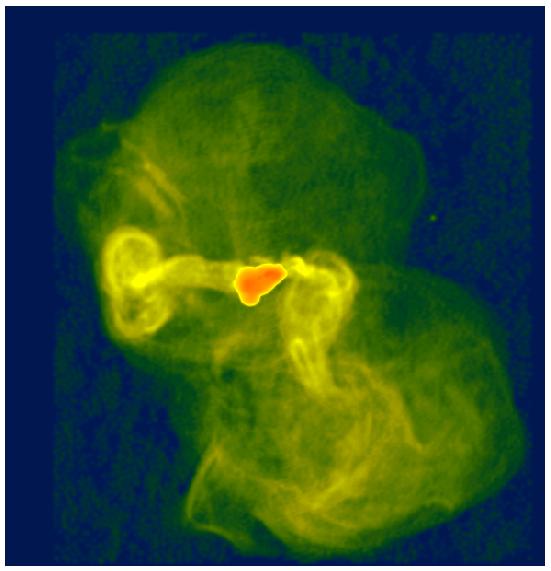petsie wrote:Hi folks,
My question is: how can such a very huge mass have been concentrated like in the black hole in the center of M87? Is it just the time since big bang which allowed the weakest of the known four forces to collect this mass from dozens or hundreds galaxies, each having a "moderate" black hole in their centers?
Hi petsie, Welcome to the Asterisk. I'll try to take a stab at answering your questions.
All those distant quasars are supposedly powered by massive gluttonous black holes. The most distant known quasar, CFHQS J2329-0301, is at z = 6.43 when the universe was only 680 million years old. So, presumably, massive black hole developed quite early and grew rapidly by eating up everything in sight.
Perhaps it was the higher densities of the early universe that allowed massive black holes to form. Fortunately, in today's tenuous universe these remnant massive black holes go hungry most of the time.
petsie wrote: If I understood some popular texts about cosmology well, the universe is considered to be 'flat' due to inflation. 'Flat' is understood by me as: Take a small part of the universe (some megaparsecs^3 (or how many dimensions we need)) get the mean of the physical circumstances and you've got a picture of the universe.
I would define that more as being "homogeneous" (another consequence of inflation).
'Flat' as understood by me is:
1) Euclidean geometry rules and
2) Don't expect to look in a powerful telescope and observe the back of your head out there somewhere.
petsie wrote: A few billions of sun masses concentrated in one stellar object seem to be a huge variance. And I'm a bit afraid of an answer like "Yes, over the time some galaxies melted and their black holes did so similarly", because the universe would be a bit boring, wouldn't it? It would be more exciting, if some very very small differences short time after big bang would have been blown up by inflation so that matter had no other choice than to concentrate locally in such a remarkable amount.
Just to outline my question: Is there a contradiction "flat universe" <-> a black hole past comprehension?
No quite sure I understand?
There may be a contradiction in "homogeneous universe" <-> massive black holes."
But then the universe isn't totally "homogeneous" is it:
http://antwrp.gsfc.nasa.gov/apod/ap050925.html
petsie wrote:P.S.: It is very impressive that the weak gravitation (together with conservation of angular momentum and magnetic induction) accelerates matter to ultra-high velocities ("The jet of matter emerging from the core extends at least 5000 light-years from the nucleus of Messier 87 and is made up of matter ejected from the galaxy, most likely by a supermassive black hole. In pictures taken by the Hubble Space Telescope in 1999, the motion of Messier 87's jet was measured at four to six times the speed of light. This motion is believed by some to be a visual result of the relativistic velocity of the jet [of course (comment by me)], and not true superluminal motion. However, detection of such motion supports the theory that quasars, BL Lac objects and radio galaxies may all be the same phenomenon, known as active galaxies, viewed from different perspectives.", from:
http://en.wikipedia.org/wiki/Messier_87)
The gravitational force may be weak but
1) it is long range and
2) it can't be canceled out like electric forces (except perhaps by dark energy).
This makes the collective gravitational force stronger than any other force.
 M87: Elliptical Galaxy with Jet
M87: Elliptical Galaxy with Jet

